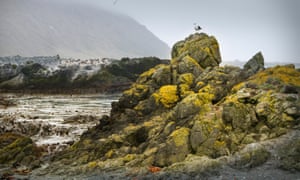Extract from The Guardian
Investigation found increasing OH&S risks and risks from ocean inundation at the base unless it had major upgrade


The Australian Antarctic Division (AAD) on Tuesday announced plans to
close its permanent research station that has been operating since 1948
and instead use a network of field huts to be used by seasonal staff.
The ageing station would have needed significant upgrading at considerable cost to bring it up to an acceptable standard, AAD boss Nick Gales said, adding that the shutdown would reduce the effects of humans on the island.
The AAD said an independent engineering investigation had earlier concluded there were increasing occupational health and safety risks, environmental contamination and risks from ocean inundation at the base unless it underwent a major upgrade.
The 13,000-hectare island – which lies about halfway between New Zealand and Antarctica – is jointly administered by Tasmanian national parks service and the AAD. It is home to large colonies of elephant seals, penguins and other sea birds.
In 2007, an ambitious and island pest eradication program began, which successfully removed all introduced animals, including cats, rabbits, rats and mice, from the island.
Gales said the decision to shut down the base would come as a shock to researchers.
“Macquarie Island is a unique and fragile ecosystem which holds a special place in the heart of many expeditioners and scientists, so I understand people may be disappointed with this decision,” Gales said.
The base will be be dismantled and removed in early 2017. The assignment of year-round scientists at the station will be replaced by seasonal trips using field huts with the final contingent of year-round staff vacating the station in March.
Gales said the closure of the Macquarie Island base would not affect Australia’s climate change research.
“We certainly would not wish to see and I don’t believe we will see any real degrading in our ability to undertake the climate science we need to across the Southern Ocean and Antarctica,” Gales said.
“Most of the priority science that happens on Macquarie Island ... can continue, we’re able to support that.
“There are some elements of long-term monitoring, some of the weather observations conducted by the Bureau [of Meteorology], some of the other long-term monitoring projects that require people on the island all year round will be impacted.”
Australia will maintain its Antarctic base operations at Mawson, Davis and Casey.
The Greens senator Peter Whish-Wilson said news of the closure shows the financial pressure faced by the division.
“Successive budget cuts, year after year, to the Australian Antarctic Division has clearly led to some bases like Macquarie Island falling into disrepair,” Whish-Wilson said.
“Any change to the management and use of Macquarie Island should have been undertaken simultaneously with a review of the state and federal management plans.”
The division had planned to send 12 to 14 people to Macquarie Island for the coming summer and had already started making arrangements for winter 2017, which will be adjusted.
• Australian Associated Press contributed to this report
The ageing station would have needed significant upgrading at considerable cost to bring it up to an acceptable standard, AAD boss Nick Gales said, adding that the shutdown would reduce the effects of humans on the island.
The AAD said an independent engineering investigation had earlier concluded there were increasing occupational health and safety risks, environmental contamination and risks from ocean inundation at the base unless it underwent a major upgrade.
The 13,000-hectare island – which lies about halfway between New Zealand and Antarctica – is jointly administered by Tasmanian national parks service and the AAD. It is home to large colonies of elephant seals, penguins and other sea birds.
In 2007, an ambitious and island pest eradication program began, which successfully removed all introduced animals, including cats, rabbits, rats and mice, from the island.
Gales said the decision to shut down the base would come as a shock to researchers.
“Macquarie Island is a unique and fragile ecosystem which holds a special place in the heart of many expeditioners and scientists, so I understand people may be disappointed with this decision,” Gales said.
The base will be be dismantled and removed in early 2017. The assignment of year-round scientists at the station will be replaced by seasonal trips using field huts with the final contingent of year-round staff vacating the station in March.
Gales said the closure of the Macquarie Island base would not affect Australia’s climate change research.
“We certainly would not wish to see and I don’t believe we will see any real degrading in our ability to undertake the climate science we need to across the Southern Ocean and Antarctica,” Gales said.
“Most of the priority science that happens on Macquarie Island ... can continue, we’re able to support that.
“There are some elements of long-term monitoring, some of the weather observations conducted by the Bureau [of Meteorology], some of the other long-term monitoring projects that require people on the island all year round will be impacted.”
Australia will maintain its Antarctic base operations at Mawson, Davis and Casey.
The Greens senator Peter Whish-Wilson said news of the closure shows the financial pressure faced by the division.
“Successive budget cuts, year after year, to the Australian Antarctic Division has clearly led to some bases like Macquarie Island falling into disrepair,” Whish-Wilson said.
“Any change to the management and use of Macquarie Island should have been undertaken simultaneously with a review of the state and federal management plans.”
The division had planned to send 12 to 14 people to Macquarie Island for the coming summer and had already started making arrangements for winter 2017, which will be adjusted.
• Australian Associated Press contributed to this report
No comments:
Post a Comment